Half of Gaza water sites damaged or destroyed, BBC satellite data reveals
- Published
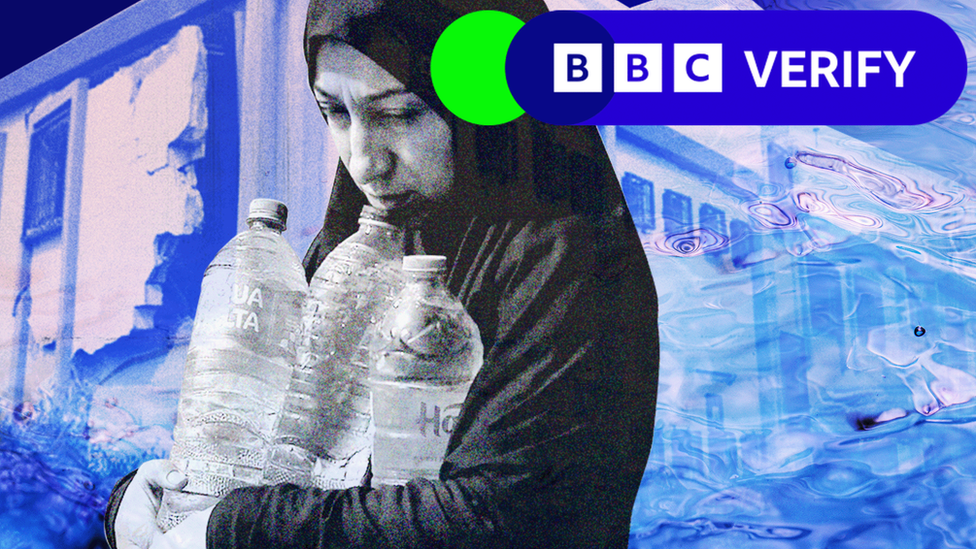
Hundreds of Gaza's water and sanitation facilities have been damaged or destroyed since Israel began military action against Hamas, satellite analysis by BBC Verify has found.
Damage to a major supplies depot has also severely disrupted repairs.
The lack of clean water and flows of untreated sewage pose a serious threat to health, say aid agencies.
The Israel Defense Forces told the BBC that Hamas cynically exploits civilian infrastructure for terror purposes.
The destruction comes despite Israel's duty to protect critical infrastructure under the rules of war, unless there is evidence sites are being used for military reasons, say human rights lawyers.

Clean water has always been a limited resource in Gaza and the territory has largely relied on a system of boreholes and desalination plants for its supply.
Our analysis found that more than half of these vital facilities have been damaged or destroyed since Israel launched its retaliation in Gaza after Hamas attacked on 7 October.
We also found that four of the six wastewater treatment plants - crucial to preventing the build-up of sewage and the spread of disease - have been damaged or destroyed. The two others have shut down because lack of fuel or other supplies, according to one aid agency.
The plants were among more than 600 water and sanitation facilities that we analysed, using a list of locations provided by Gaza's Coastal Municipalities Water Utility (CMWU).
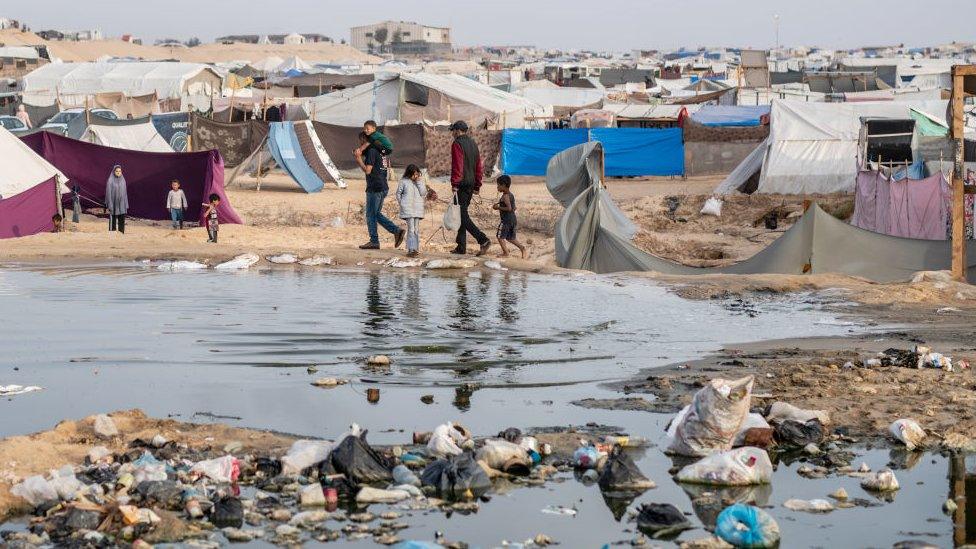
Accumulated sewage is contaminating Gaza's water supply - Rafah, 24 April 2024
In one satellite image, of Khan Younis in the south of Gaza, two damaged large water storage tanks can be seen.
The destruction of water and sanitation facilities has led to "disastrous health consequences for the population", said Dr Natalie Roberts, executive director of Medecins Sans Frontieres UK.
"The rates of diarrhoeal disease have gone catastrophically high," she said.
In very severe cases, such disease can kill young children and the vulnerable. Rates of hepatitis A - found in contaminated water and particularly dangerous for pregnant women - are also high, according to the charity.
"This is killing people," Dr Roberts said.
There is a particular spike in disease in Rafah in the south where many Gazans have fled to, Dr Roberts said, and a risk of cholera.
There has been widespread damage to buildings across Gaza since Hamas attacked Israel on 7 October. According to the UN, about 69,000 housing units have been destroyed and a further 290,000 damaged.
Homes are now "very unlikely" to have running water, according to aid workers we spoke to.
BBC satellite analysis
To carry out this analysis we sought advice from experts at the UN and Human Rights Watch on the best approach.
For each site, we sourced the most recent high resolution satellite imagery and compared each shot with an image taken prior to 7 October.

We then marked a facility as destroyed or damaged if the closest structure to the given co-ordinates appeared to be reduced to rubble, partially collapsed, or showed other signs of damage.
BBC Verify has not distinguished between "destroyed" and "damaged" facilities. This is because without knowing the precise outline of each facility, we cannot say whether it has been partly damaged or completely destroyed.
Water wells usually consist of an underground borehole and electric pump, together with a small control room above ground. However, as the control room is not always visible or easily identifiable we had to rely on analysing the nearest visible buildings when assessing damage.
What we found
Of the 603 water facilities we analysed, 53% appeared to have been damaged or destroyed since 7 October.
A further 43 facilities were in areas that showed some damage or where solar panels had been removed, but we were unable to determine whether the water facility itself had been damaged so these were not included in our analysis.
The latest available satellite images were acquired in March and April, and our analysis has been ongoing since April.
The majority of sites identified as destroyed or damaged are in northern Gaza or in the area around the southern city of Khan Younis.
At one wastewater facility in Bureij, in the centre of the Strip, solar panels that power the plant had been obliterated and sewage treatment tanks appeared to have algae growing on the surface.

Not all damage is visible from satellite images, so our analysis may have missed some affected facilities. Some sites also may not be fully operational due to a lack of fuel.
For example, the Unicef desalination plant in Deir al-Balah - one of three large seawater facilities in Gaza - can only work at 30% capacity because of lack of fuel, Unicef told the BBC.
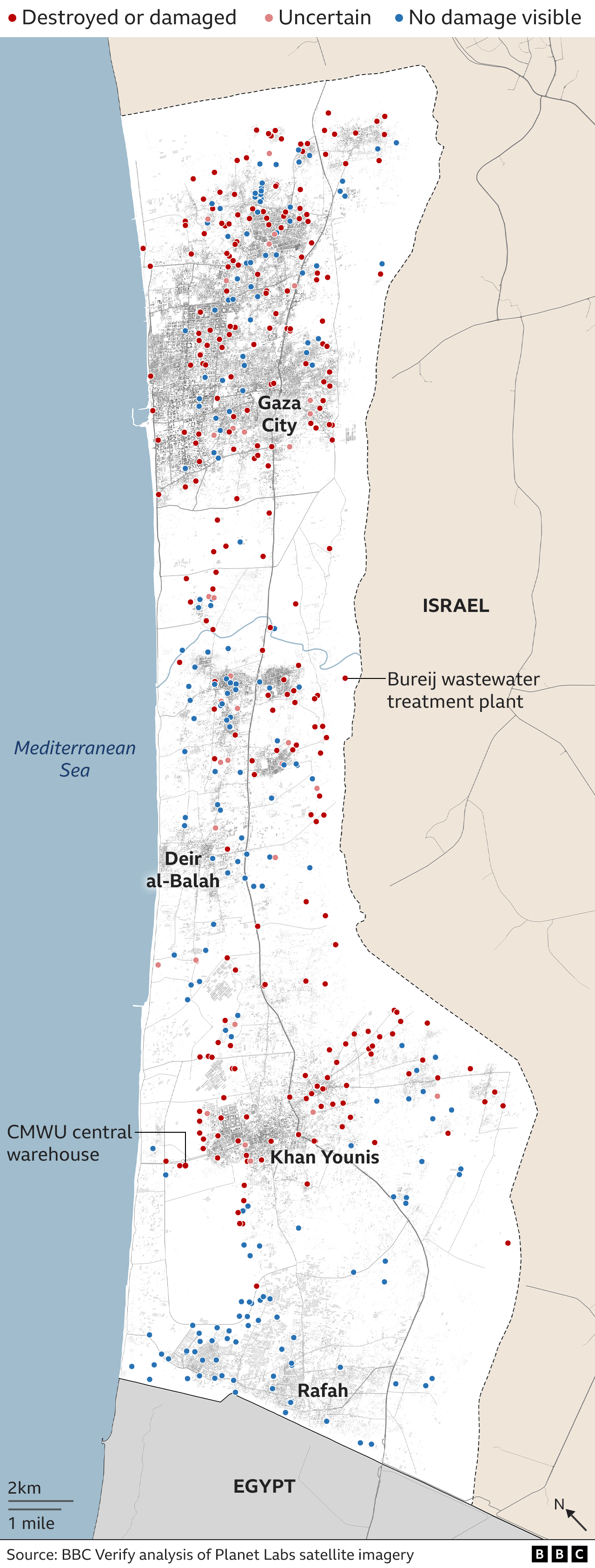
With most Gazans now displaced from their homes, and living in tented camps, the build-up of sewage in the streets is even more of a threat.
"The pumps for sewage are not operating and the streets are flooded [with it]," said Muhammad Atallah, who works for the Palestinian Centre for Human Rights.
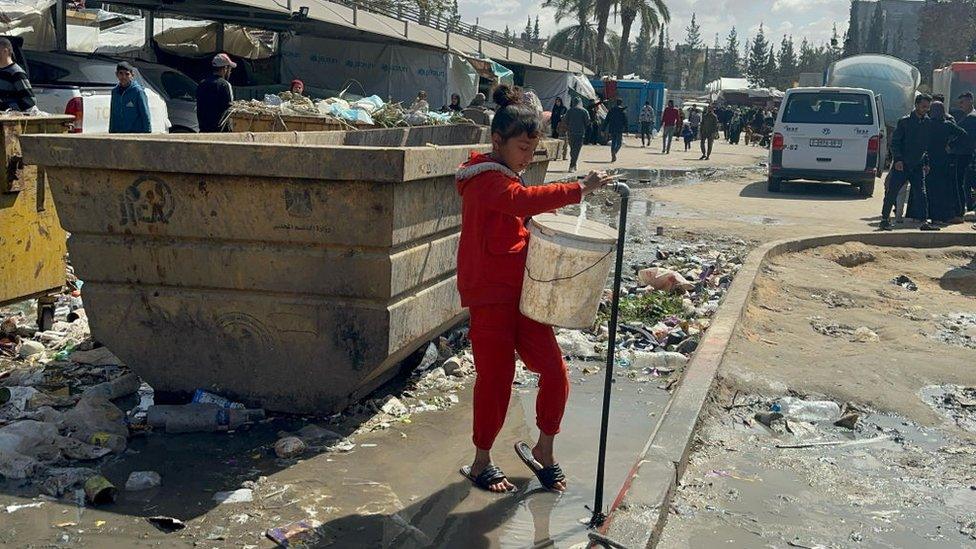
Sewage is contaminating clean water supplies, posing serious health risks, including in the southern city of Khan Yunis
Damage to a vital maintenance depot
The conflict has already made water facility repair difficult for Gaza's water authority, but a strike on a key maintenance warehouse has made it harder still.
The building, in the neighbourhood of al-Mawasi, was severely damaged in a missile strike on 21 January. Four people died and 20 others were injured, according to the CMWU.
Monther Shoblaq, the director general of CMWU, told the BBC this warehouse, which acted as a depot for both the CMWU and Unicef, contained more than 2,000 items used for maintenance, and was the heart of the water and sanitation services in Gaza. Its destruction has severely limited CMWU's ability to repair and maintain vital facilities such as water pipelines, he said.
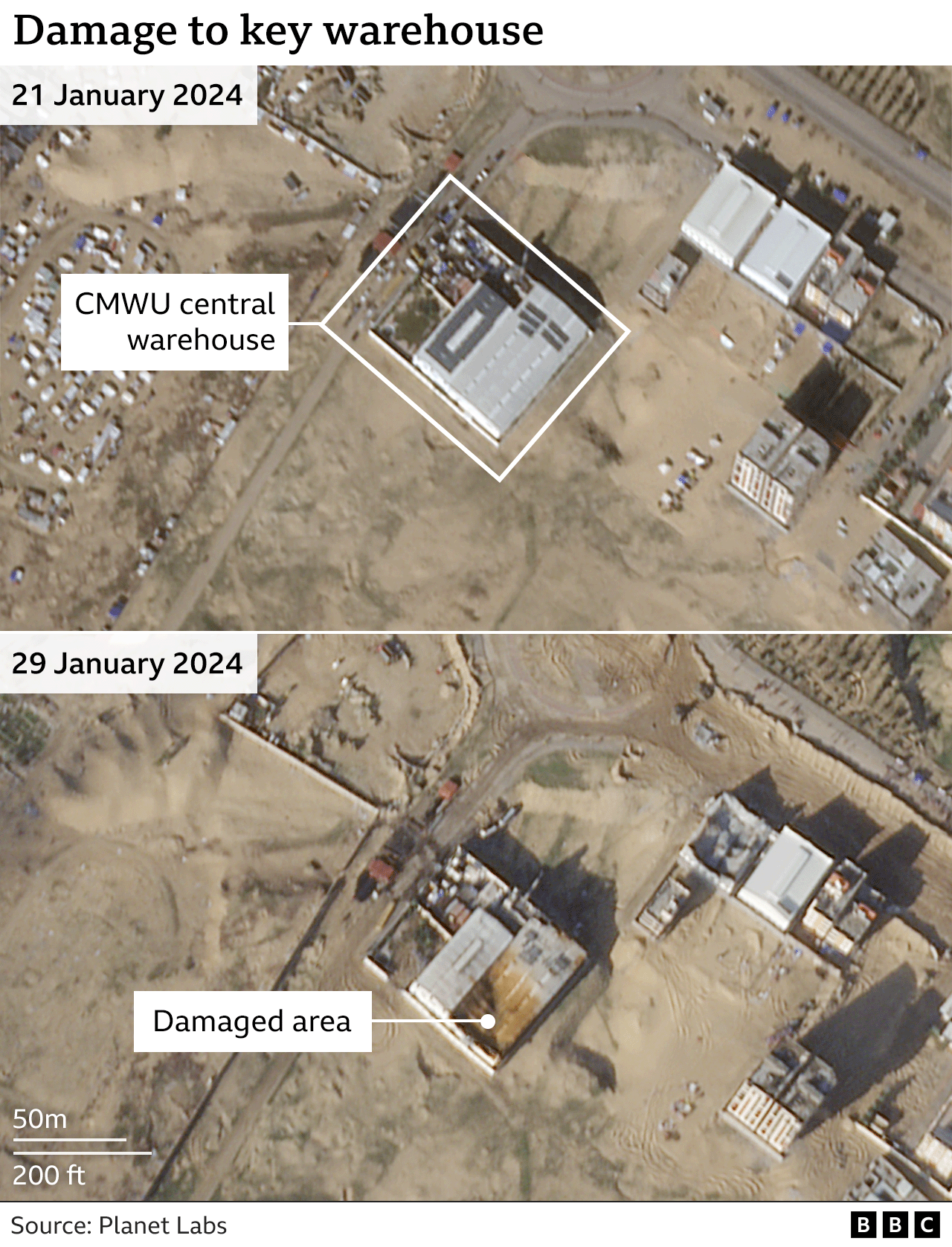
The IDF said the warehouse was not targeted, but that Hamas terrorists operating nearby were struck and "it is possible that parts of the warehouse suffered damage as a result of the strike".
We gave the IDF a sample of five other damaged or destroyed water sites from our analysis. In one case, the IDF denied there had been an air strike, in the four other cases it said Hamas fighters or sites were the actual targets.
"Hamas stores its weapons and ammunition within these civilian structures, constructs terror infrastructure beneath them, and from them, launches its attacks… The IDF is locating and destroying these terror infrastructures, which have been discovered, among other places, in and near the water facilities in question."
Leila Sadat, a former special adviser on crimes against humanity at the International Criminal Court, told the BBC that facilities critical to the survival of civilians should be protected unless a military body has some concrete evidence to suggest otherwise.
To assess war actions in terms of legality, you need to consider "the pattern" of those actions, she said.
"You can't just look strike by strike… [t]hey [the IDF] have hit water pipes, tanks, reservoirs, and infrastructure," she said.
"To take out over half of water and sanitation would be very difficult without intentionally doing so. So the pattern is evidence of either a reckless approach to civilian objects or the intentional destruction of them; these were not all mistakes," she added.
In response to our findings, Sara Elizabeth Dill, an international criminal and human rights lawyer, said: "What we are seeing is essentially siege warfare and the total destruction of Gaza, without regard for human life or human decency, or any attempts to comply with international law."
Additional reporting by Erwan Rivault, Joshua Cheetham, Benedict Garman and Deena Easa

